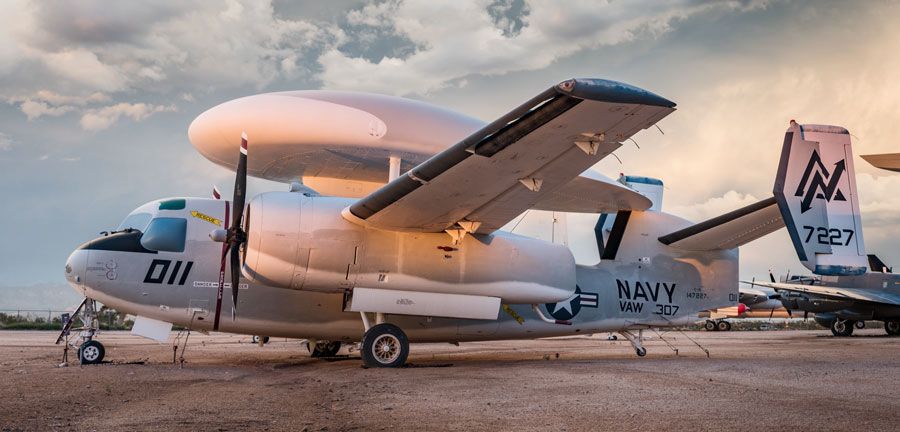Grumman E-1B (WF-2) Tracer
Grumman began work on modifying the S2F Tracker into an airborne radar platform in 1955 as a company funded project. At the same time the Navy was working on a request for proposals for just such an aircraft and Grumman offered their new design as a temporary solution while the Navy finalized their requirements. After the Navy agreed work on the design continued into 1956 with several changes being made to the design. Most importantly the TF-1 Trader was adopted as the basic fuselage from which the Tracer would be modified because the Trader which was itself derived from the S2F had a wider fuselage giving more room for electronic equipment. The first WF-2 flew on March 1, 1958 and operational aircraft began arriving at active squadrons in early 1960. Initially planned as an interim design the Tracer was the Navy’s primary carrier based airborne radar aircraft until the mid-1970s. The last of the 88 Tracers built left Navy service in November 1977.
Wingspan | 72 ft 7 in. |
Length | 45 ft 4 in. |
Height | 16 ft 10 in. |
Weight | 26,600 lbs (loaded) |
Maximum Speed | 227 MPH |
Service Ceiling | 15,800 ft |
Range | 1,010 miles |
Engines | Two Wright 1820-82A radial engines with 1,525 horsepower each |
Crew | 4 |
Manufacturer
Grumman
Markings
Airborne Early Warning Squadron 307 (VAW-307), Naval Air Station North Island, California, 1974
Serial Number
147227
Designation
E-1B
